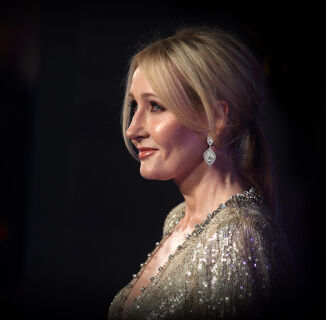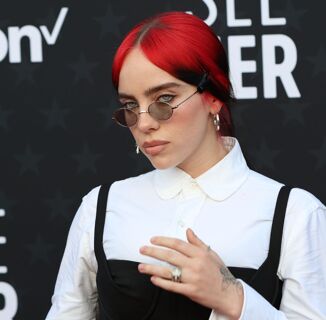It’s commonly understood that season seven of RuPaul’s Drag Race is one of the show’s weakest. The cast, while charismatic, specialized in fashion and aesthetic, while the challenges they competed in mostly tested their performance skills. The battle of the season boiled down to younger queens versus older queens, and the latter were edited into a particularly negative light. And, as season seven queen Kennedy Davenport noted in our interview with her, the whole endeavor seemed “rushed.”
Yet as time goes on, and more seasons pass, it’s becoming crystal clear that, although it’s not a great season, season seven is easily the most important chapter in RuPaul’s Drag Race herstory one that changed the way we watch the show.
Before you start shouting about how iconic season six’s cast was, or how perfectly entertaining All Stars season two was, let me be clear: Season seven being important does not make it any better. The challenge design and story plotting were fatally flawed, and nothing will change that. But if you want to track when and why the fans’ relationship with Drag Race changed and why we keep getting a very similar type of winner now you have to go back to the season that saw Violet Chachki take the crown.
Let’s start with the fandom. There were certainly popular queens to come from the show before season seven: Adore Delano, Bianca Del Rio, Pandora Boxx, Raven, Sharon Needles, and more. None of them reaches the stratospheric heights of popularity that Trixie Mattel and Katya have in the years since season seven, though.
Across the board, season seven was the season of the white, young, quirky queen. Katya was the instant fan favorite, all but inciting riots when she went home in fifth after Kennedy blew her away in a lip sync to Katy Perry’s “Roar.” She and Trixie quickly hitched their wagons to each other in UNHhhh, which later became Viceland’s The Trixie & Katya Show, and the rest was history. Then you had popular-but-weird fashion queens Pearl, Max Malaphany, Miss Fame, and eventual winner Violet.
Comparatively, performing queens like Mrs. Kasha Davis, Ginger Minj, Jaidynn Diore Fierce, and Kennedy couldn’t keep up. They were edited either as forgettable or villains, and the fans ate up that narrative. Kennedy talked frankly on All Stars season three about being the undesired at Meet and Greets compared to most of her sisters.
The impact of this edit has been long-reaching. Other than season eight, which had an all-POC final four (and, perhaps not coincidentally, was shot before season seven had much of a chance to settle in fan consciousness), every season since has been won by a white or white-presenting queen. Alaska triumphed over two other white queens in the All Stars season two final three, while Sasha Velour out-lip-synced Shea Coulée and Peppermint in the season nine finale. And, of course, we remember what happened with Trixie, Shangela, and the jury vote in All Stars season three.
You can argue for each of these queens’ success on the show, and you’d hear no argument from me. Alaska smashed the challenges, Sasha dominated her lip syncs, and Trixie’s off-show résumé clearly proved compelling to the jury. But look at how fans respond: Sasha and Trixie both have followings that easily eclipse their runner-up sisters’. Not only is the show currently preferring the quirky white queens, fans are as well. How much of that is a symbiotic relationship is unknowable to us we don’t know how much RuPaul and the show take fan response into account. But the end result is the same: Since season seven’s young, white queens charmed audiences, that same demographic has been dominating among Drag Race fans.
Why does that make season seven more influential than another season where a white queen won, like season four or five? The answer lies in our next point of study, which is audience. While fans were crazy-passionate about the show before season seven, there were fewer of them; season seven saw a huge uptick in the show’s audience. It wasn’t the show’s biggest audience, but it was the largest without any kind of inflation no simulcast on VH1, no move to a bigger network, and so on.
Anecdotally, you hear a lot of “I started at season seven” among the show’s younger viewers, too. Many of them have gone back and watched old seasons, but season seven was their entry point thus, all past and future seasons colored by this one.
So yes, Jinkx Monsoon and Sharon Needles fit the bill of the white, quirky winner, but they didn’t win at a time when the show was big enough. When they won, Drag Race was a niche Logo show that mostly gay men watched. Now, Drag Race is event viewing, with a much younger, more female audience.
That last part is key: With a demographic shake-up came a new approach to the show. Social media was no longer just where fans were airing opinions, but a battleground for post-Drag Race success. The ones who won there truly lasted the test of time; queens who couldn’t understand social media and the younger fans who populated it fell behind their savvier sisters.
We think of event seasons like All Stars season two and season nine as what changed the game for Drag Race, but season seven teed them up for success. But is changing the way Drag Race is watched enough? Can’t you argue that season two’s introduction of challenges like Snatch Game and Reading Is Fundamental makes it more important? Or that season nine’s move to VH1 was the real game-changer?
Short answer: You can, but you’d be wrong.
Long answer: The reason you’d be wrong is because only season seven has all of these things. While it didn’t radically alter the show’s structure, it did introduce some major recurring elements, like the new format of Untucked and a mid-season return twist that involves all the eliminated queens. (This has become especially popular on All Stars.) Add that to the growing audience and the changing interactions from fans, and you’ve got a kind of Rosetta Stone for understanding modern Drag Race.
Again, none of this changes that season seven is not a very good season. It’s tough to watch tremendously talented queens wasted on a set of challenges that don’t benefit them, and most of the entertainment comes from the cringe (“Shakesqueer”) instead of the quality. The top six is top-tier (fun fact: between this season and All Stars seasons two and three, all six have made the final three once), but their talents are best seen in other formats.
But as Drag Race continues to shift, it’s vital to know when and how it started its metamorphosis. Season seven changed the game, plain and simple, and created a Drag Race that will, for better or worse, reign for years to come.
Help make sure LGBTQ+ stories are being told...
We can't rely on mainstream media to tell our stories. That's why we don't lock our articles behind a paywall. Will you support our mission with a contribution today?
Cancel anytime · Proudly LGBTQ+ owned and operated
Read More in Culture
The Latest on INTO
Subscribe to get a twice-weekly dose of queer news, updates, and insights from the INTO team.
in Your Inbox












